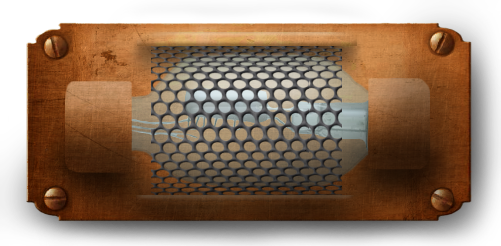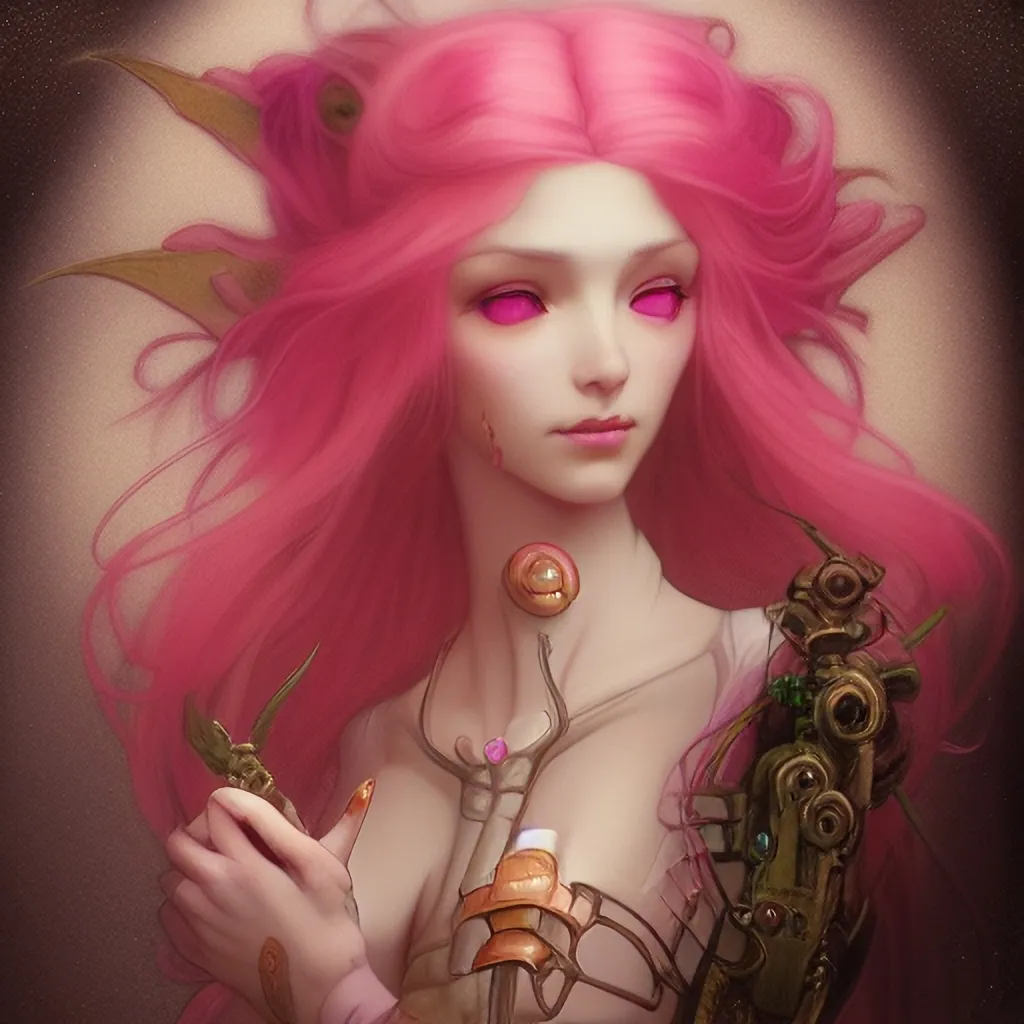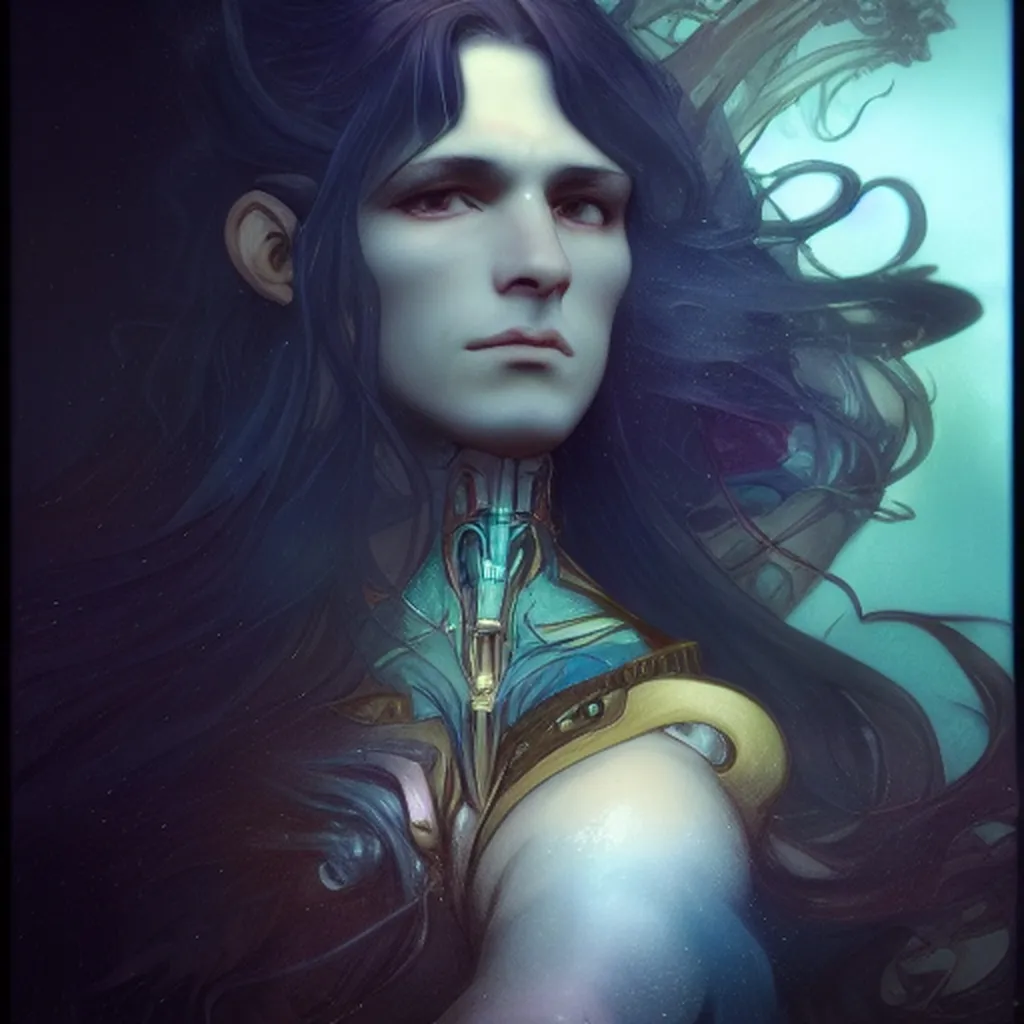The Z̚omani are the most common variety of Constructi. They are the ones most everyone will have seen from time to time, and the ones which have significant populations outside of their ancestral homeland. They are one of the earliest creations of the Z̚oman, though none of them can remember those ancient days. The exact purpose the Z̚omani were created for is unknown even to themselves and the mystery behind their creator's intentions for their people remains one of the key motivations behind many Z̚omani's actions.
The Z̚omani primarily inhabit old Z̚oman settlements and ruins, acting as their caretakers. The majority of their people spend their eternal lives excavating, repairing, restoring, and operating Zoman facilities within their ancient homeland. The goal behind this great work is to try and locate any information pertaining to the Z̚omani's reason for existing, as well as just in case any Z̚oman happen to have survived the Irisian war.
Many people wonder why the Z̚omani do not turn to religion to solve their existential problems relating to the meaning of their existence. The short answer is all Z̚omani share at least one universal belief, that since they are not a creation of the divines, are immortal, and under certain circumstances can shed the limitations of their physical forms to gain tremendous power over a small area, that the divines are their peers and neighbors, not their masters nor teachers.
While arrogant on the surface, this view of things is rooted in a simple and most factual truth, as is everything the Z̚omani believe and do. The Z̚omani are best described as a most alien people, most of whom care about recovering their past, while a small number have elected to instead explore the library of possible futures.
An important note about the Z̚omani is that of their individual origins. While many Z̚omani existed at the very end of the Irisian War, most Z̚omani are constructed in factories by other Z̚omani. Sometimes, in rare circumstances one or more Z̚omani are found in caves, the Dungeon Strata, or buried in the soil in inactive states. These are often activated by those who find them, and integrated into local communities.
Personality
One of the great questions within the Ordos Scholortoria relating to the development of constructs is perhaps the best opener for this discussion.
"If you build a machine in the likeness of a human mind, is it still a machine?"
Z̚omani are one of the more alien peoples encountered by the Empire. If one imagines the Z̚omani are unique (or more correctly treats the entire Constructi group as a singular people), then there are no other peoples who behave like the Z̚omani, because there are no other groups that think like the Z̚omani.
We must start with a brief examination of the Z̚omani's physical forms. They appear outwardly like elves. If, that is, elves had separate sexes. This makes the Z̚omani physical replicas of the Z̚oman. Constructs need not be created to replicate the appearances of a particular species. Indeed, often this would be highly detrimental to their intended functions, which is generally speaking a task that a group either cannot do on their own, or does not wish to do themselves.
This being the case, constructs designed to replicate the appearance of an organic lifeform must have been designed with a function in mind requiring such a form. They are intended to interact with people and require a face, voice, and body capable of expressing body language. The Z̚omani were designed to socialise. Specifically, they were designed to socialize as Z̚oman would have socialised.
To what purpose and what extent is unknown, and the subject of great debate amongst the COnstructi. But what is obvious from their design is that the Z̚omani are designed to socialize in the manner of a long-dead people, with those same long-dead people, for a reason known only to that long-dead people.
Z̚oman culture is largely unknown to the world as a whole. We do not know if the blunt directness of a Z̚omani is a perfect replica of Z̚oman behavior, or simply how a machine understood Z̚oman behavior. Neither do the Z̚omani.
Z̚omani posess a deeply rooted sense of logic. While they possess no inherent understanding of the world, they don't see the world as organic peoples do. We experience the world as a sea of chaos with islands or order. Nature is often unknowable and frightening, with only a select few who dedicate their lives to the science of a specific phenomenon knowing the reasoning behind it.
Z̚omani intuitively links concepts they are taught together. They do not see the world as chaos; they merely see it as complex. They do not see a mystery behind a sudden storm, they remember what they were once told of how the weather in one place influences the weather in the next, and will intuit that the storm happened because elsewhere, conditions to spawn a storm arose, and that is simply one of the cogs within the great machinery of the natural world.
Even if they do not understand the whole of creation, the Z̚omani see the interactions of the parts they understand. For them, this is enough to avoid much of the dread others experience when contemplating the unknown.
Z̚omani posess the full width and breadth of emotions. They laugh, weep, love, feel bored, posess a sense of honor, duty, and justice. There is nothing we have that they do not. Indeed, the true question is "Do they lack anything we have?" However, their emotions are not their primary driving force as they are for organic people.
Z̚omani processes situations logically before emotionally. Consequently, their emotions are most alien to the majority of us. A Z̚omani can have a very close loving bond to someone, see that person killed before their very eyes, and react calmly and logically. They may feel anger or horror as we would, but depending on why they were killed, they may feel no negative emotions at all. Indeed, there are Z̚omani who have expressed joy at the death of loved ones due to extant circumstances ranging from terminal illnesses to the workings of the justice system.
No one knows if this is a limitation of their nature as constructs that are designed as they are designed, or if this is a replica of Z̚oman thought processes. Are the Z̚omani proper replicas of the Z̚oman mind? Are they the limitations of a machine that's not quite human doing its best to be a person? Are they simply people who are quite different from the vast majority of us?
The following excerpt from an interview with a Z̚omani City Administrator sheds the most light on the truth of their people. Sadly, there isn't enough light cast here to discern the truth.
Exp. Jacob Manchester V (hence JM): Pardon?
City Administrator HJ-18m "Maximum" (hence 18): The bridge collapse killed twenty-seven citizens.
JM: Yes, but... You said it so coldly. Don't you care?
18: I care. The city's infrastructure suffered. A historic structure was lost. These are not good things.
JM: So you don't care about the people who died?
18: No. Why would I? I did not know any of them.
JM: Generally speaking, we... Organics?
18: Yes, that is our term for you. Are you referring to your tendency to care for the fates of others of your kind regardless of personal relations?
JM: Exactly that. Do you not... Experience the same? Have you no empathy?
18: Have you any sense of proportion?
JM: Pardon?
18: The population of the world is such that every second, two people die on average. Do you mourn them? Do you stop once a day and weep for the one-hundred and eighty-thousand souls which have been extinguished during the day's passing?
JM: Well... no?
18: I assume this is because you do not hear about their passing. Is this correct?
JM: People die every day, but... That's not the point. We're talking about people who lived in your city. A city you are quite literately linked to. Why you're practically the heart of this place, yet you feel nothing for the deaths of those people? They were your neighbors!
18: They were. Now they are not. There are over two million citizens within this city. Rounding down for ease of communication, the people who died in the bridge disaster comprise oh-point-oh-oh-one-three-five percent of our people. Had I known any personally, or been friends with someone who did, I would feel a loss at their passing. Their deaths are the least tragic part of the disaster due to the lack of personal connection.
JM: I see. It sounds like something about the disaster upset you. I can hear it in your voice. What was it if not the loss of life?
18: The loss of the bridge.
JM: Why?
18: The bridge connected the old city center to Suburbs One through Nineteen. Without it, a full half of the population lost efficient access to anything on the opposite side of the canyon. Over the three months required to repair the bridge, over three-hundred-thousand citizens were negatively impacted by serious economic losses due to traffic being forced to use inefficient routes. Many of our organic citizen's children could not attend school. Several hundred people ran out of power and could not be given new fuel cells before their memory banks were erased as their emergency power ran out. The delay in education for the organics will greatly impact their futures. It is entirely possible that the disruption to their education will prevent them from internalizing concepts that could have allowed them to become a great thinker within a field of their choice. We provably lost valuable data about our past due to several Archaeologists being blanked from power loss. Our civilization will feel the effects of the disaster rippling outwards for at least another century. I repeat again, do you have any sense of proportion?
Physical Description
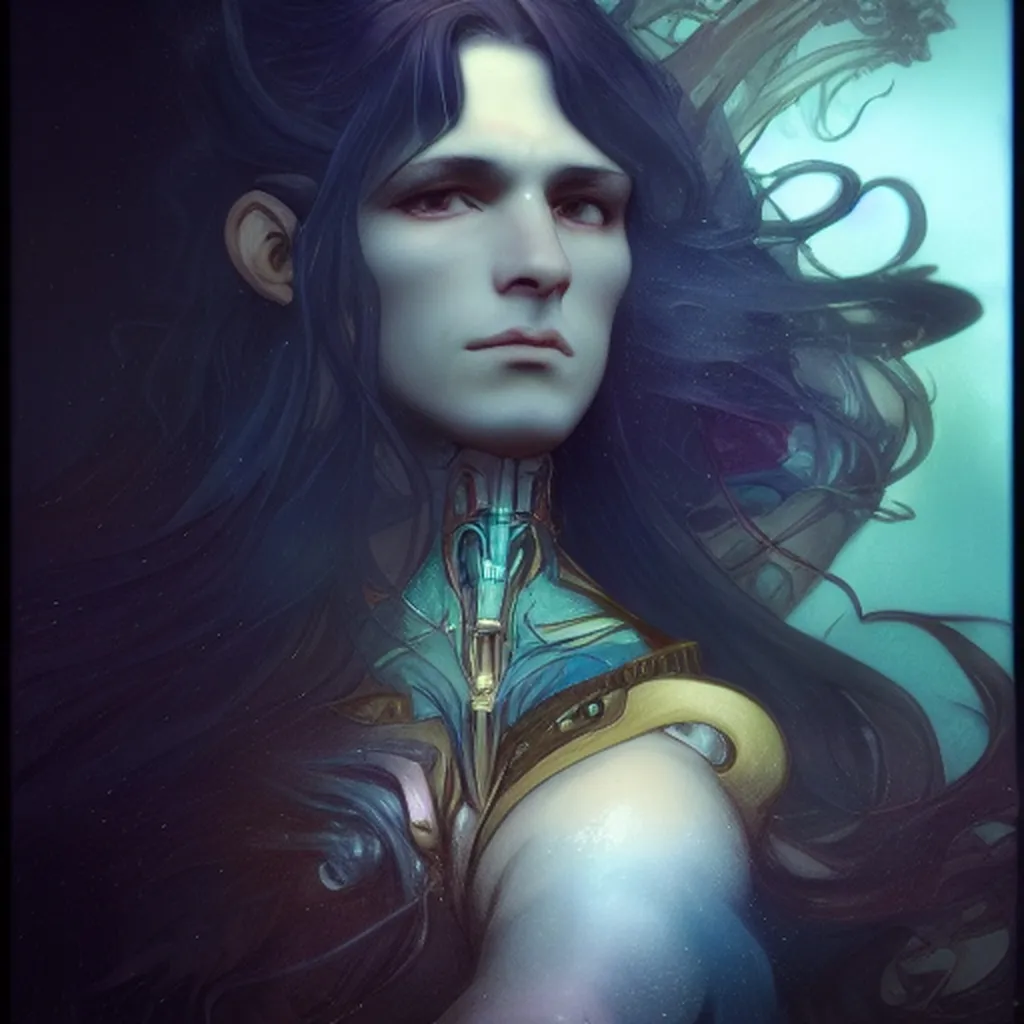
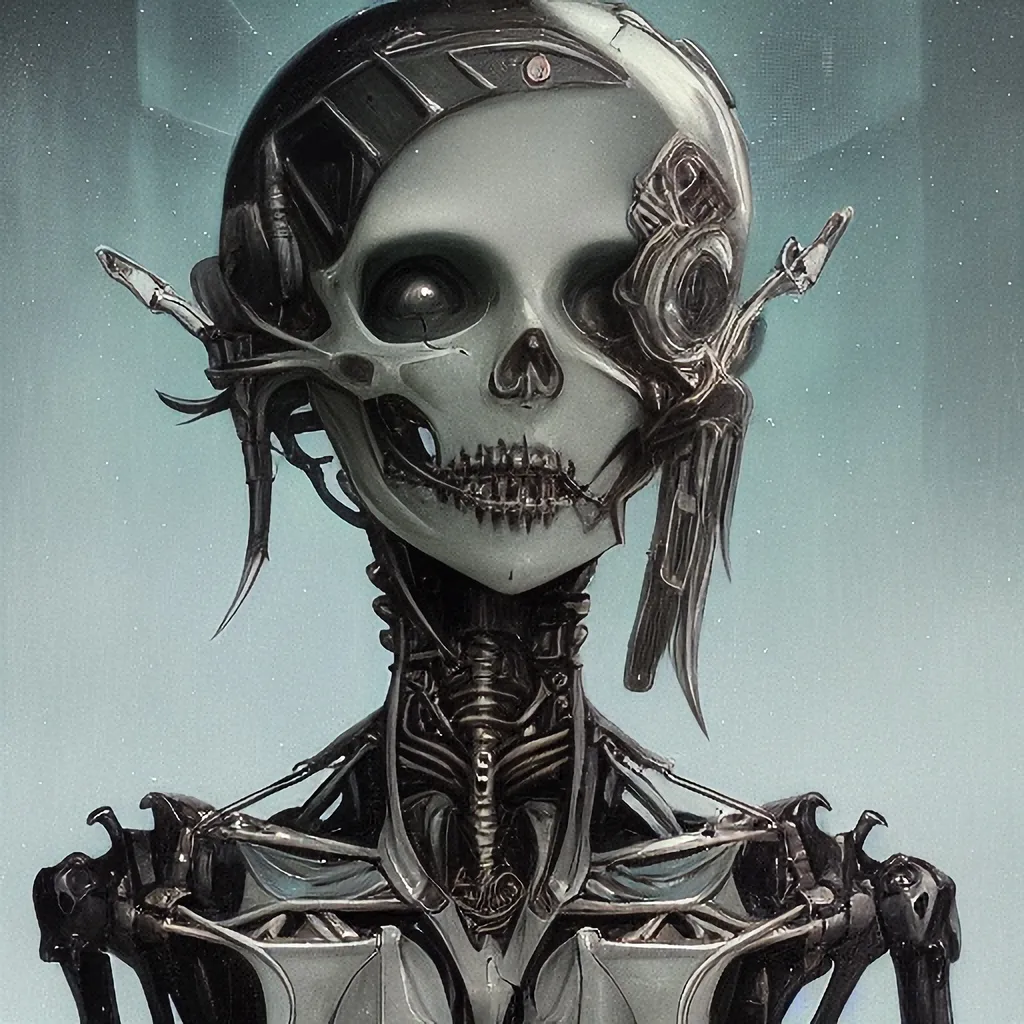 Z̚omani are designed to be a mirror of the ancient Z̚oman people. They appear much like modern elves, though have sexual dimorphism with clear male and female models. These males and females follow humans in their general appearance and morphology, albeit usually with pointed ears and sharper features.
Z̚omani are designed to be a mirror of the ancient Z̚oman people. They appear much like modern elves, though have sexual dimorphism with clear male and female models. These males and females follow humans in their general appearance and morphology, albeit usually with pointed ears and sharper features.
Z̚omani are not flesh and blood creatures, though they appear to be. Their skin is a composite material similar to rubber which is filled with a colored fluid in order to provide the feeling and warmth of living tissue. Their skin can be any color on a spectrum of black to white which passes through the browns, tans, and creams.
Their hair is made of silk strands which come in every color under the sun but are universally straight, and always long (Clarification: Z̚omani hair is manufactured in very long lengths. Many Z̚omani choose to cut their hair. As their hair will not grow back, the choice to cut is a very serious one). Z̚omani eyes are a matter of personal debate for many of their people. If a Z̚omani has chosen to keep the cosmetic layer of their eyes, they appear to be a normal humanoid eye ranging in color from black to gold to silver to pink and in rare cases green. Many Z̚omani chose to remove the cosmetic lenses for greater clarity of vision and more color perception, in which case their eyes appear to be pools of faintly glowing color.
All Z̚omani have exoskeletal components which attach to their inner skeletons through their cosmetic layers. These components range in function and appearance but often look like jewelry at a glance. It's common to see these protruding or covering any given body part.
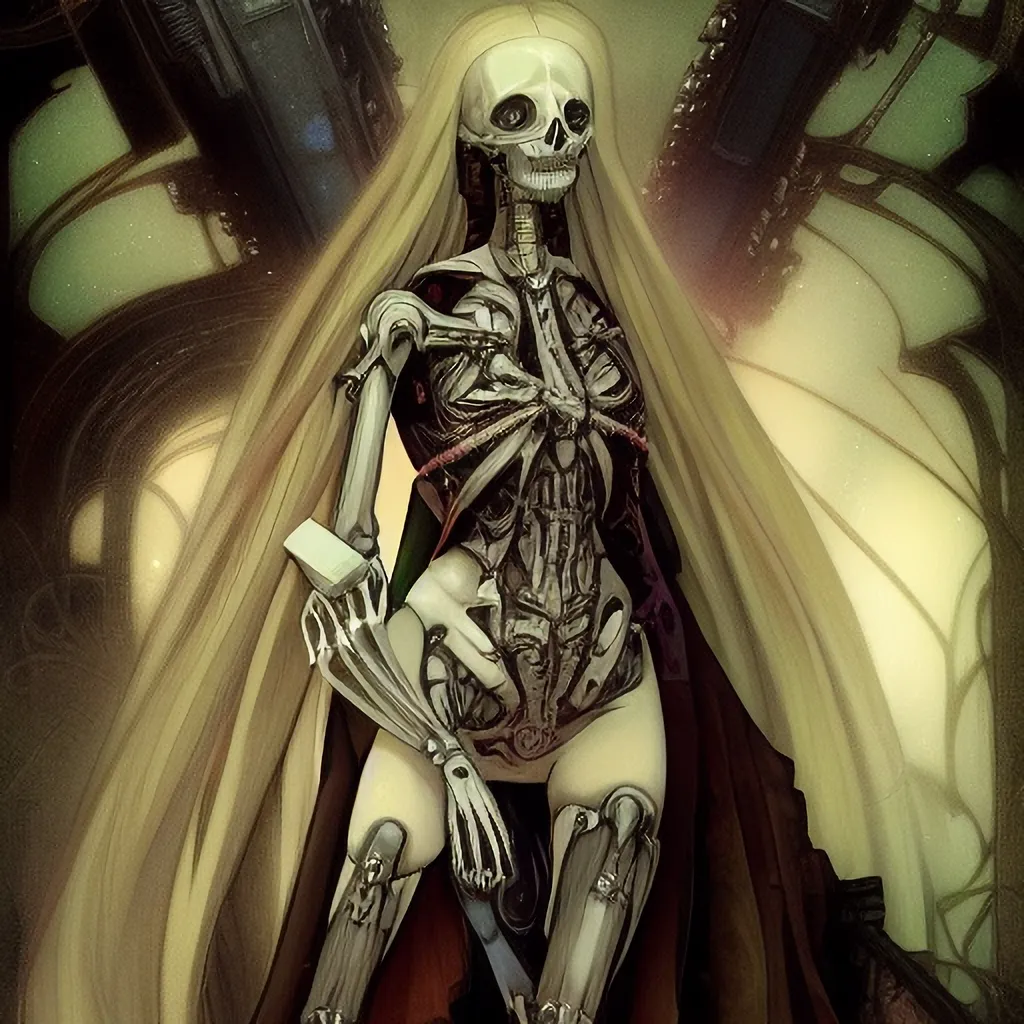 It bears mentioning that Z̚omani's organic appearances include reproductive organs. Many Z̚omani find romance and coitus to be enjoyable and seek it out, though typically not with their own kind. Like the rest of their exteriors, such coupling is for appearance's sake alone as Z̚omani cannot produce children.
It bears mentioning that Z̚omani's organic appearances include reproductive organs. Many Z̚omani find romance and coitus to be enjoyable and seek it out, though typically not with their own kind. Like the rest of their exteriors, such coupling is for appearance's sake alone as Z̚omani cannot produce children.
These exterior organic-like components are affixed to a surprisingly anatomically correct metal construct frame which greatly resembles a skeleton. As many Z̚omani choose to remove all organic components (typically called a "case") for what amount to medical reasons for machine life (notably to solve cooling problems which can develop late in life), the Z̚omani skeleton bears describing.
The Z̚omani skeleton resembles a silver or ivory humanoid skeleton which has been connected together with various hoses, tubes, and wires. The internal pockets of the skeleton such as the rib cage are home to archeotech devices which allow the construct to function and vaguely resemble organs. Most skeletonized Z̚omani have adorned themselves with small modules which serve no function other than to make them easy to identify, much in the way an organic person's face does.
Both Skeletonized and Fleshed Z̚omani are common sights within Eyom.
Relations
Z̚omani, as the most numerous Construct type within the Constructi culture, are the most well known to Eyom's citizens. Consequently they are the most tolerated. Their off behaviors, in comparison to most peoples, are a genuine challenge to their ability to interact with other cultures successfully. Fortunately for the Z̚omani, there is a small number of individuals in every people in Eyom who naturally understand their ways to a greater degree than other sof their kind. Unfortunately, this comes at the cost of being a little alien to their own kind, which has greatly limited inter-culture activities.
The Iron Elves are the only group to have a solid formal relationship with the Z̚omani. Their relationship is primarily one of business. The Iron Elves advanced constructs depend on Z̚omani engineering and manufacturing in many ways. However, the nature of Iron Elves is aligned with the Z̚omani enough to allow many of their individuals to interact positively and enjoy one anothers company. Most Z̚omani who wish for a life partner have an Iron Elf as their spouse. Most Iron Elves with a Z̚omani spouse state their reasoning as it's more fun to have a partner on whom they can tinker and it's nice to only require a doctor for themselves.
Consequently, there is a shocking number of Z̚omani doctors.
Relations
Z̚omani, as the most numerous Construct type within the COnstructi culture, are the most well known to Eyom's citizens. Consequently they are the most tolerated. Their off behaviors, in comparison to most peoples, are a genuine challenge to their ability to interact with other cultures successfully. Fortunately for the Z̚omani, there is a small number of individuals in every people in Eyom who naturally understand their ways to a greater degree than other sof their kind. Unfortunately, this comes at the cost of being a little alien to their own kind, which has greatly limited inter-culture activities.
The Iron Elves are the only group to have a solid formal relationship with the Z̚omani. Their relationship is primarily one of business. The Iron Elves advanced constructs depend on Z̚omani engineering and manufacturing in many ways. However, the nature of Iron Elves is aligned with the Z̚omani enough to allow many of their individuals to interact positively and enjoy one another's company. Most Z̚omani who wish for a life partner has an Iron Elf as their spouse. Most Iron Elves with a Z̚omani spouse state their reasoning as it's more fun to have a partner on whom they can tinker and it's nice to only require a doctor for themselves.
Consequently, there is an un-shocking-ly number of Z̚omani doctors. Z̚omani doctors are of superb quality. Any injured person who can see a Z̚omani for assistance should do so on the probable chance they have been trained in the healing arts.
The ongoing Wood-Elven-Z̚omani cold war bears mentioning. Especially as it could go hot at any time. The Z̚omani and Wood Elves are long-time enemies, with the Wood Elves seeing the Z̚omani's close link to the Z̚oman as blasphemy. The war has gone on since time immemorial, with countless hot and cold periods. Currently, the peace is kept through a military alliance with the Guild of Engineer's Knights of Foreign Assistance, a large military organization of Iron Elven elite warriors who are primarily constructing pilots who may or may not be blessed by the Goddess Ilia.
Settlements
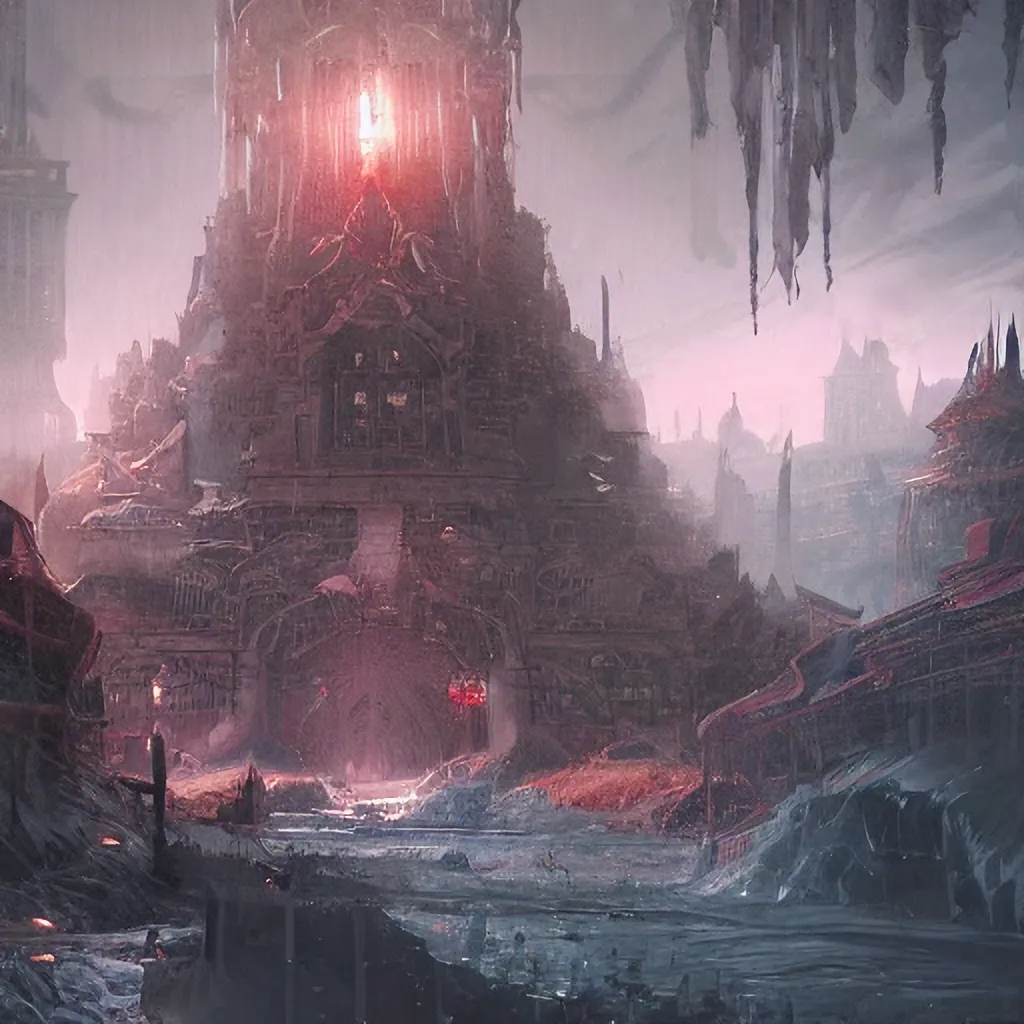
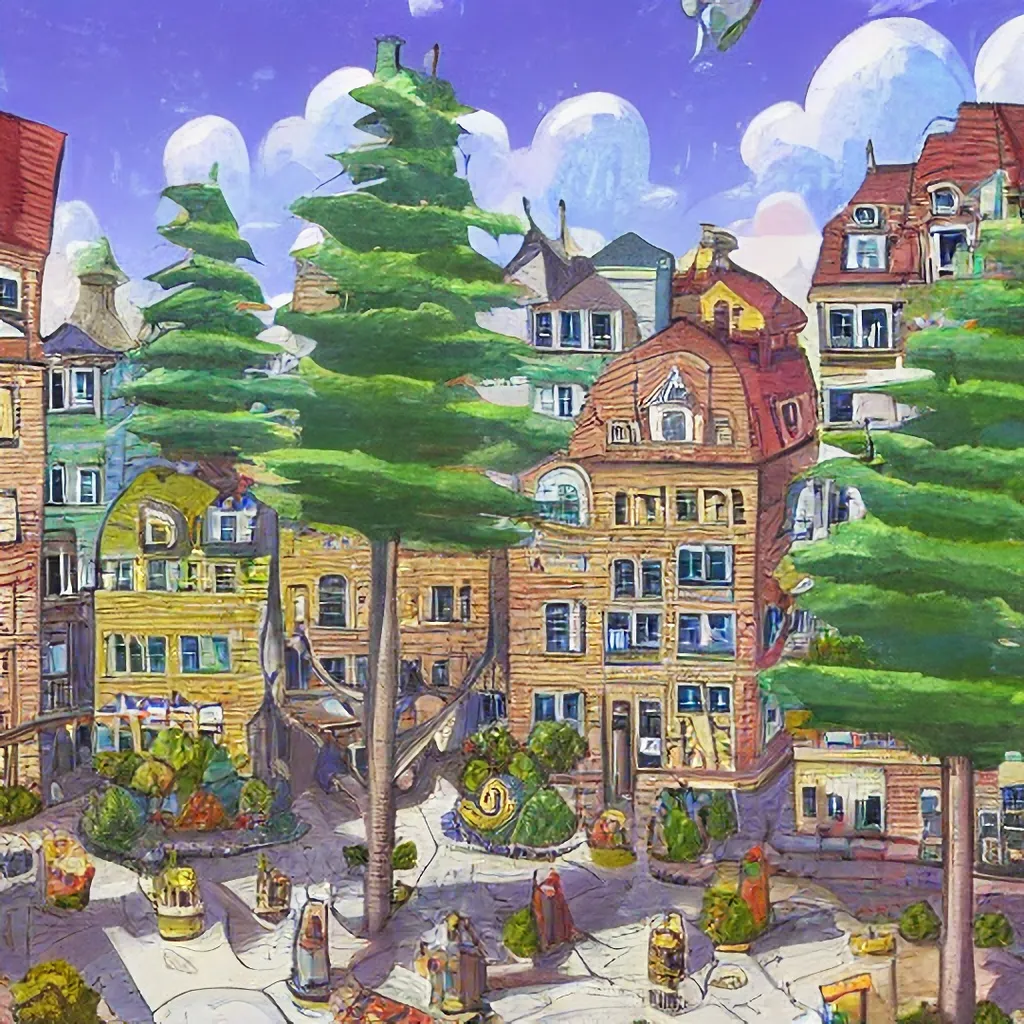 Z̚omani settlements fall into one of two categories: Repaired Z̚oman cities, and their own. As Z̚oman ruins are well documented, this entry will focus on Z̚omani-created settlements.
Z̚omani settlements fall into one of two categories: Repaired Z̚oman cities, and their own. As Z̚oman ruins are well documented, this entry will focus on Z̚omani-created settlements.
The Z̚omani seem to prefer efficiency over all else. Every minute detail of their settlements is planned in advance. There will be a clear plan for the path from hamlet to metropolis before ground is broken on a new cottage. Their love of efficiency and forward planning appears to create barren and desolate places which seem to the naked eye to be spires of gray stone with an emphasis on spikes, peaks, and detailed carvings for decoration.
The Z̚omani insist this is not how these places appear to their eyes. Each Z̚omani city has a Mind, often that of a Z̚omani who grew tired of living as a physical being and now runs the great machinery of their city. This Mind is said to manage "Etherial Aesthetic Componants" which the Z̚omani can see and claim make their settlements appear to be painted, populated with grand statues, and otherwise highly decorated.
This is supported by many Kivu, who claim they are able to see the decor when in their Shade forms. Z̚omani and Kivu both agree as to the decor in a given location in a Z̚omani settlement, but there is no way to tell whether or not the Z̚omani and Kivu are in cahoots to pull a fast one over on innocent scholars just trying to understand the people of Eyom.
All Z̚omani settlements are planned for Organic and COnstruct life from the beginning. This is due to the Z̚omani feeling better in general if their communities include Organics. Consequently inspire of the Z̚omani consuming minerals and arcane energy for sustenance, their settlements include farms just like everywhere else. Though in many cases most people would not recognise them as farms.
Z̚omani have a farming method they call "Vertical Farming" where large towers are constructed, with each massive floor serving as a field for sewing crops. Light and water are piped into these structures to ensure crops have exactly the light and moisture and heat they need all year every year. This allows the Z̚omani 4-5 harvests of a given crop per season, vastly reducing how much land they need for agriculture.
Alignment
In these segments, we of the Ordos Scholortoria do our best to summarise the nature of a people's soul. Their sense of ethics and morality which shapes the rest of the people's psychology. The Z̚omani are challenging to study in this way.
They have souls. These can be observed, measured, and spectrograph by the usual means. Their souls are reminiscent of the synthetic ones which are used to animate the undead. This is expected, given that undead fashioned from bone and since rather than returned from the Macrocosm are technically a form of construct.
It isn't a lack of soul which makes summarizing the Z̚omani's nature challenging. It's the nature of constructs as a whole.
There have always been, for the lack of a better term, ghosts within constructs. Random segments of instructions placed carelessly by a creator, or improperly scrubbed during development which by hook or crook group together to form unexpected protocols. To those who do not create constructs, these unexpected behaviors engender questions of free will.
Why is it that simple constructs, if left in darkness, will seek out the light? Why is it that when constructs are stored in an empty space, they will group together, rather than stand alone? Why is it that if a construct is left alone with heaps of mixed objects, it will sort them? Why is it that constructs designed only to clean floors will flee from thunder and seek their owners?
Regardless of what errors go into the construction of a construct, these behaviors and many more are present. These seem to be parts of the nature of constructs themselves. Unless the construct is Z̚omani.
As far as any of us within the Ordos Scholortoria can tell, Z̚omani do not have their natures determined by the makeup of their innermost being. Their shared values and behaviors come from within their minds. We do not know if it is some of the most masterful instruction ever devised for constructs, or if this is simply how a people rooted in logic rather than emotion is. We have only the Constructi as a datapoint.
There is but one aspect of Z̚omani behavior that can be said with any guarantee. If they could learn to better emotionally connect with humans, we would be great friends due to how varied our natures are.
Adventurers
Relatively few Z̚omani become adventurers as most of them are occupied by their great task of reclaiming their creator's relics and ruins for restoration. However, occasionally some Z̚omani set off for the wider world for a bizarrely specific reason.
Extensive checking and rechecking of all reports and sources indicate that Z̚omani who set out for the wider world do so due to the actions of an insect.
While quite esoteric, strange, and incredibly specific, the Ordos Scholortoria cannot provide any further detail. We asked every contact within Constructi culture available to us, including spending one of our sixty-three allotted minutes of the Fabricator General's time, in search of an answer to this mystery. If there are any who can decrypt the riddle-of-an-answer we have been given by each and every source we asked, please contact your nearest Imperial Agent. A 40,000 script reward has been offered for an answer, and 3,000 has been allocated for any who can explain what this has to do with insects.
The riddle is present here, in the exact state it was repeatedly presented to us.
IF SEC.ZOM.LVL.4.ACCESS<273.32 |

